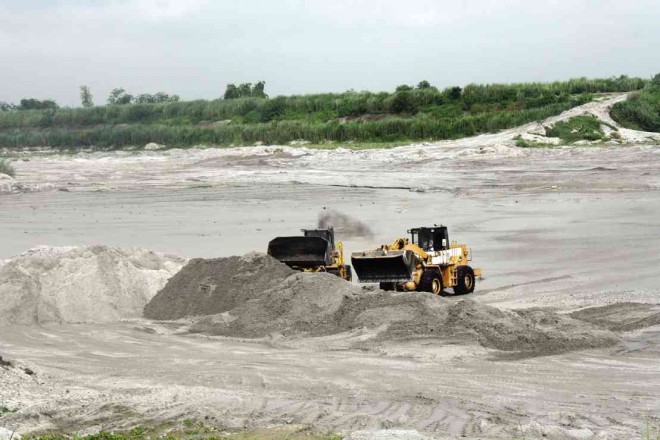Phivolcs: Pinatubo lahar threats not over
CITY OF SAN FERNANDO—Significant deposits of lahar and volcanic materials fill the middle slopes of Mt. Pinatubo and eight rivers draining to Pampanga, Zambales and Tarlac provinces even 24 years after it erupted, the government’s chief volcanologist said.
Renato Solidum Jr., director of the Philippine Institute of Volcanology and Seismology (Phivolcs), said residents in Central Luzon provinces near the volcano should be alert and remain vigilant, especially during heavy rains and typhoons.
“It’s been quite a long time since lahar events had occurred [during severe typhoons]. But this does not mean that the lahar threat is over. Extreme rainfall events pose lahar threats,” Solidum said in a telephone interview on Monday, the 24th anniversary of the blast.
“People should be extra vigilant and ready with their contingency plans,” he said.
Phivolcs estimated that the climactic eruption on June 15 put 5 to 6 cubic kilometers of debris on the slopes of the volcano and left a crater that was 2-kilometer wide. Scientists reckoned it to be the second largest eruption in the 20th century, after a volcanic eruption in Alaska.
Article continues after this advertisementThe 1996 book, “Fire and Mud,” said pyroclastic flows “traveled as much as 12 to 16 km from the vent in all sectors, impacted directly an area of almost 400 square kilometers, and profoundly altered the landscape.
Article continues after this advertisementLocal scientists said volcanic debris covered the Zambales mountain range, which spans from Bataan to Pangasinan.
Rains washed down lahar consisting of ash, sand, mud, stones and gases to the river basins of Pasig-Potrero, Porac-Gumain and Abacan in Pampanga; Sacobia-Bamban and O’Donnell in Tarlac; and Santo Tomas, Bucao and Maloma in Zambales.
Typhoons and tropical storms triggered old lahar deposits or remobilized lahar further downstream, Solidum said.
The immediate draining of the Santo Tomas and Bucao rivers to the West Philippine Sea does not reduce the risks of lahar because the deposits there are bigger and the trapped deposits on dikes are higher than communities these are supposed to protect, he said.
In Pampanga, Solidum said Phivolcs was looking at a scenario where lahar on Delta 5, a former watch point located in what is now on the slopes beside the Subic-Clark-Tarlac Expressway, could be washed toward the Porac-Angeles Road or far down the traverse dike, which is being rebuilt.
Solidum warned that settling inside the FVR Megadike “comes with risks” because its purpose is to trap lahar. The U-shaped megadike, which is 53-km long, has enclosed and buried 18 villages of Bacolor town.
Phivolcs, he added, had not issued any certificates to commercial or residential projects inside the megadike.
Foreign and local companies have set up equipment that produce “vibro” or finer sand beside the eastern side of the megadike in Barangay Maliwalu. These have not secured permits from the Bacolor local government or the Department of Public Works and Highways (DPWH), said Loreta Malaluan, DPWH assistant regional director in Central Luzon.
Solidum said flooding would be a lingering hazard in the three provinces, especially Pampanga, as lahar continued to silt waterways.
The maintenance of channels should be a regular work, he said.
Zambales, Tarlac and Pampanga have lost their rivers as lahar buried old channels. Solidum said it is uncertain that these would be revived soon.
